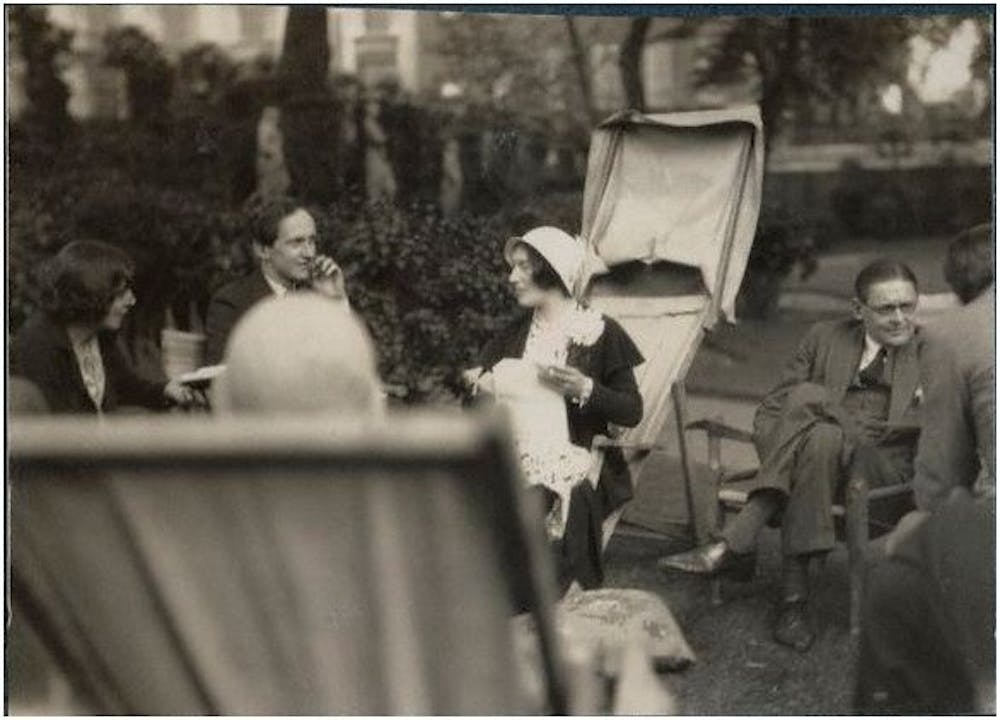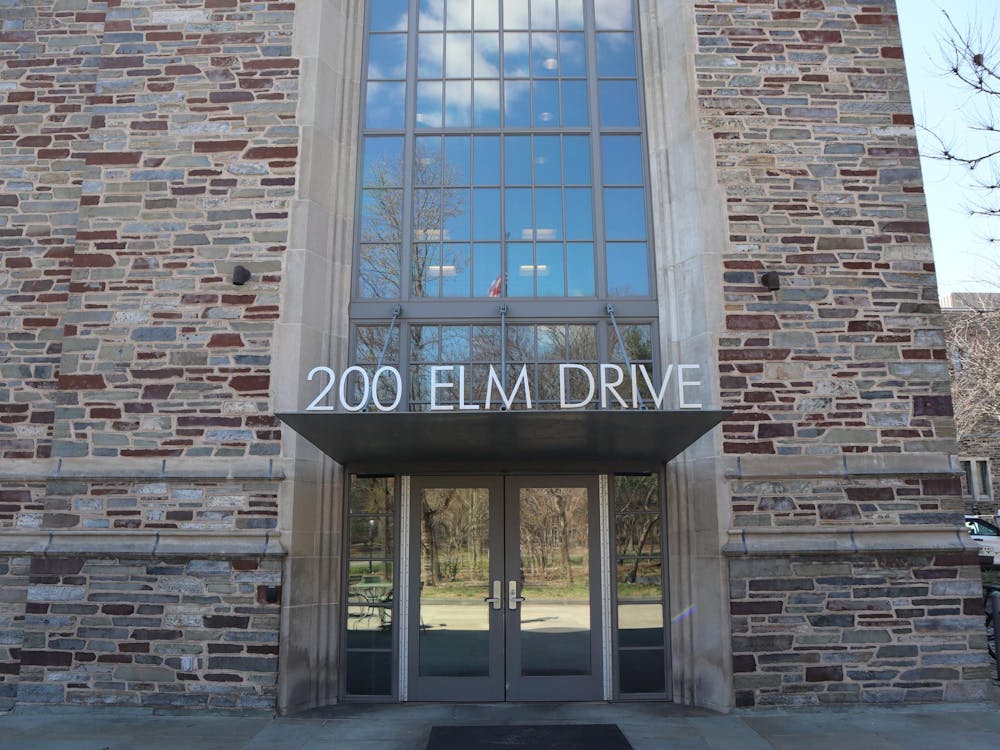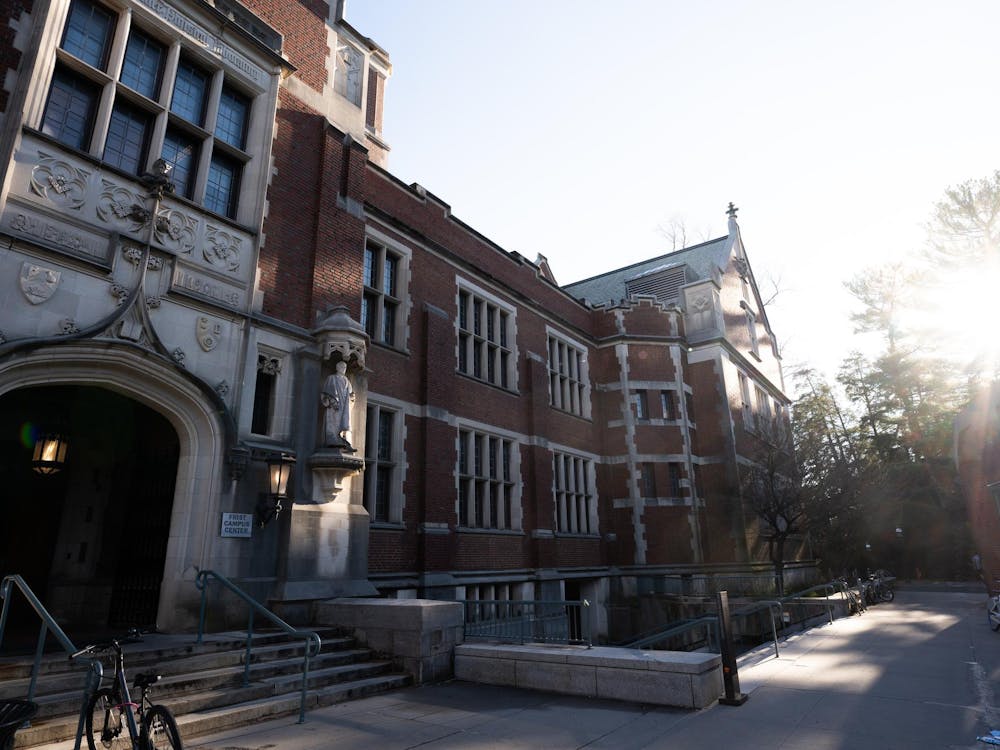“I don’t think we’ve ever seen Eliot look so happy as he looks in these wading pictures. It’s very unusual,” Professor Susan Stewart of the University’s English department remarked toward the end of her interview with Sally Foss, former student and friend of Emily Hale — the source of much interest due to her correspondence with famed poet T. S. Eliot.
“Yes, yes, I can remember him sort of giggling. He said, ‘oh, goody-goody!’” Foss remembered fondly with a light hearted chuckle at the end.
“It’s very unusual.”
“It’s very unusual.”
After reading the letters from Eliot to Hale and then learning what transpired after, Professor Stewart’s words seem to perfectly capture my thoughts. It’s quite the experience delving into the relationship between Eliot and Hale, mixed with a tingling of happiness and giddiness, laughter, bits of intelligence and wisdom, and of course romping about in the sentiment and longing that such a tragic love story can cause.
It was actually Professor Stewart who informed me of the Eliot and Hale letters in the first place. It was during one of her seminars last semester, “Poet’s Poets,” when she mentioned that the letters were soon to be opened after 50 years of being kept locked up in the library. A longtime fan of Eliot, I could not contain my excitement and interest, and over Intersession I finally got to visit the story firsthand. Recently, Professor Stewart also interviewed a former student of Hale’s, allowing us a glimpse into Hale’s side of the story as well, for her letters had been lost in a storm of anger by Eliot, who had burned them.
Hopefully, my account will give a more full view of the whole of this unusual love story.
The story of Hale and Eliot is the perfect getaway from all the madness of our current world. I would be remiss to say that this is a complete picture. It is not; it is an outline of the story, which you will hopefully get to hear in full when we return to campus, if you have the chance, or when it gets published in a collection. I would also be lying if I said I didn’t sprinkle in a bit of bias in my retelling, as there are certain parts of the story that have drawn more of my interest.
With that, our very unusual tragedy commences.
They met while Eliot was attending this small liberal arts college up in Cambridge, Mass. I think it’s called Harvard or something like that. You may have heard of it.
He graduated in 1906 and would stick around for a few years while working on a graduate course preparatory to complete his doctorate in philosophy. Eliot and Hale met in 1912 and soon became good friends. For him, that friendship developed into a sense of love, which he confessed the very next year before he was to leave to Germany for his studies. However, Hale “could return no such feeling.”
They still continued to share letters quite frequently. “He would even send flowers on special occasions,” Hale remembered fondly in one letter. You can probably imagine her shock when after the war he married a woman, named Vivienne, whom he had met at Oxford. It was to the shock of his family, as well. This marriage was unusual and, in kind words, debilitating.

“Vivienne nearly was the death of me,” Eliot remarked in a statement that he provided for Harvard University to unveil when the letters Emily had sent to Princeton were opened.
In 1922, on a trip to London to visit her aunt and uncle, she ran into Eliot again for the first time since he had left all those years ago — the first time since he had been married.
Hale became his confidante in his struggles with his marriage until about 1930, when he and Vivienne were officially separated due to her complications with mental illness. After that, nothing could contain the burgeoning relationship between Eliot and Hale — unrequited, initially, on her part.
“Well if this is a love letter. It is the look I shall own while living life and I will sign it for the first and last time praying that I have given no offence, for I see nothing in this confession to be ashamed of — my love is as pure and unmasking as any love can be,” Eliot wrote in one of his first letters in October 1930.
They exchanged letters until about the mid-1940s, and I must say I found them to be rather strange. At first, he seemed to implicate her in this rosy-hued lens. Maybe it’s because we don’t have access to her responses, because Eliot burned them all, but I can’t help but feel Eliot’s relationship was one-sided. He seemed — he was? — very demanding. I don’t know if that’s the right word. He was grasping for something, straining, I think, for someone, and she, Hale, didn’t, at first, necessarily feel the same.
“I shall try to make you understand how much you have helped me, and are helping me, my dove,” he would say.
“You made me very happy,” he repeated in almost every letter the first year of their increased correspondence, much to my dismay, as the redundancy became slightly irritating.
He also shared poems of his that he had written, asking for advice, as well as letters from other authors, such as Virginia Woolf and Ezra Pound.
“Now I hope xx your next letter may be a little longer please, and include a few scraps of information about your daily life: even if you go out to tea with Mrs and Mr So-and-so whom I never heard of, that will interest me immensely. (I love your new note paper). I shall from time to time slip in a note or a letter to me from my acquaintances, as these do I think help to make one’s life seem more real to another person.”
I would offer that it seemed to be a loneliness that inhabited him, which caused him to write in such a fervent fashion. He wasn’t alone in sharing this emotion. “[Hale] sounds like a rather lonely soul,” Professor Stewart has remarked.
They were in duet with the spirit of loneliness.
Between 1935 to 1939, Eliot spent every summer with Hale. In an interview with Professor Stewart one of Hale’s students, Sally Foss, recounted some of her memories spent with Eliot and Hale at picnics. It was within those memories and the images that coupled them that Eliot seemed the happiest we have ever seen him.
I thought they were quite surreal, some of the images. One of my favorite poems is Eliot’s “The Love Song of J. Alfred Prufrock”; in it, the narrator questions whether he should wear his trousers rolled. In many poems, Eliot has described characters wading through brooks, and here he was in these photos wading through brooks with his trousers rolled, exclaiming “Oh, goody-goody!” While seeing these photos and remembering the poems, others in the rare manuscripts room started staring at me as if I was a baboon — I couldn’t contain my giggling at the spectacle.
Hale “must have been very beautifully spoken,” remarked Professor Stewart after speaking with Foss.
In the late 1940s, another surprise took the stage, for Eliot married again, but it was not to Hale.
“She was very, very upset, understandably, when he married … and it wasn’t with her,” Foss detailed.
Eliot was married happily, and Hale was left alone at the Colonial Inn in Concord. And they didn’t see each other ever again.
“That’s where she died,” Foss recounted.
That’s where I had to stop reading for some time before I could continue. This was the part of the story that hit the hardest. The impression of the letters still whispers from my fingers when I snap, and my heart hears the sensation of words dusted from the pages.
Hale’s statement she provided to accompany the letters demonstrates how wonderful, how kind, she was toward others.
“I can truthfully say that I am both glad and thankful his second marriage brought him the great comfort and remarkable devotion of Valerie … the memory of the years when we were most together and so happy are mine always,” Hale wrote.
She had shared the letters to fulfill his wish. He had written it to her on Dec. 8, 1930.
“But what I wish to do is to mark it ‘to be given to the Bodleian Library, not to be opened for 60 years.’” Eliot continues, “I do not worry much about [posthumous] reputation but whatever I have left by that time I want to share with you. Please, I am dearly attached to this notion; but I want your permission.” So she left them at a library to be opened far after they had passed. Maybe it was a coincidence and she had forgotten he said this at all, but I would hope otherwise.
“He was lucky to have known her,” Professor Stewart said.
I agree, he was lucky indeed.
And that’s where their story ends. He loved her — at least, he thought he did — at the beginning, and over time she fell in love with him, overcoming the feeling that she could not reciprocate that day in Cambridge. Nonetheless, they became the closest of friends, and eventually, when she believed he would marry her, his heart had been set on another, and tragically, they never spoke or wrote to one another again.
It’s a very unusual story.
“A strange story in many ways but found in many another life, public and less public than his,” Hale wrote in her account.
Hale was a teacher at heart for sure. Not only was Eliot lucky to have known her, but through their letters we are lucky to have a glimpse into their relationship, as Hale said, not seen “through a glass darkly,” but like all of life, “face to face.”









